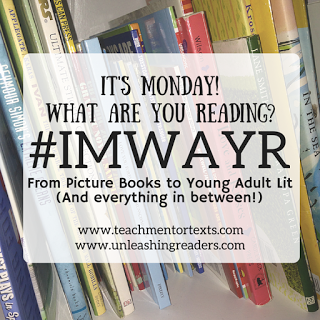This post is one of the series: It's Time to Talk Racism: 22 Days of Anti-Racist Resources for Teachers. Check out the complete campaign
here.
Often times in schools, students aren't able to celebrate who they are and what makes them unique and special. It is unintentionally at times overlooked. Celebrating who we are and our difference can by the first step to breaking the bias we and our students have.
I start by discussing with my student what is identity and things that make up our identities. At times it may be hard for even my fourth graders to understand with identity is. I love the lesson from Being the Change to also help to teach and help my students understand identity. After we talk about the meaning, we start to look at ourselves and our own identities. My students do this writing on a piece of paper about how they identify themselves (boy, girl, black, white, student, teacher, sister, mother, brother, etc). Next, we talk about why is it important to know their identity and to share that with others.
I love bringing in picture books to help grow and extend our conversations and understanding. Sulwe was published at the beginning of October and I had to have it to help foster conversations with my students about this topic. This book teaches about colorism, self-esteem, and how true beauty comes from within. *See summary below.
The next book is The Proudest Blue. The book works perfectly when teaching about identity. Just like Sulwe it also teaches to be confident with yourself and your culture.
I love hove both of these books give my students insight into other cultures and what trials they may go through.
(Teaching Tolerance Lesson on Identity)
I have used this lesson to help teach my students about identity. For more information visit the Teaching Tolerance Website.
In the essay "Magic Carpet," Mitali Perkins writes about learning to see her rich heritage through critical colonial eyes as a young girl in New York and her struggle to reclaim her history as an adult
Get Started
1. Download the essay, "
Magic Carpet," and distribute a copy to each class member.
2. Explain that the essay describes the author’s experience of boundaries within her own identity.
3. Use the following discussion questions and writing activities to help your students explore identity and assimilation in the essay and their own lives.
Discussion Questions
- Describe the author’s childhood experience of cultural boundaries. How did she respond to these boundaries? How would she respond differently now? What might have happened to cause her to write about these experiences?
- Have you ever been made fun of because of a cultural trait, such as your home language or traditional clothing or food? Describe the experience.
- Have you ever made fun of someone — or witnessed others doing so — because of a cultural trait? Describe the experience.
- What situations can you think of that force or encourage people to give up parts of their identity? Explain.
- What does the author mean by "magic carpet"?
- Do you have a "magic carpet" that you and only a few others share? What are the qualities of that "magic carpet"? With whom do you share it? What would enable you to share this secret part of your identity with more people?
Writing Activities
- Share the essay with a parent, grandparent or other elder and discuss questions 1-6 with them. Prepare a written report on what you discover.
- Choose one of these two topics:
- Have you ever tried to hide your home language, religion or any other aspect of your family’s culture from your friends or classmates? If so, why? Write an essay describing the experience, how it felt, and what, if anything, about the situation you would change if you could.
- Have you ever discovered that one of your friends or classmates has been hiding some part of his or her cultural identity from you? If so, write an essay describing how the discovery felt, how you responded, and what, if anything, about the situation you would change if you could.
- Imagine that a trait you "disown" now (a physical feature, a custom, a bit of family history, personal ties) will be gone forever at the end of today. Write a story, song or poem to say goodbye to this part of yourself. What do you remember about "it" and its role in your life? Describe your feelings. What advice would you offer to someone who feels forced to give up a part of his or her identity?
The post is dedicated to Alexander Gerhard Hoffman. He was a German national who was shot and killed in the tragic shooting in El Paso.
Thanks for stopping by :)
![Eve 2.0: The Ultimate Gaming Experience (The Gamer Series Book 1) by [Lawrence, Winter]](https://images-na.ssl-images-amazon.com/images/I/510Mvuvmr8L.jpg)







































